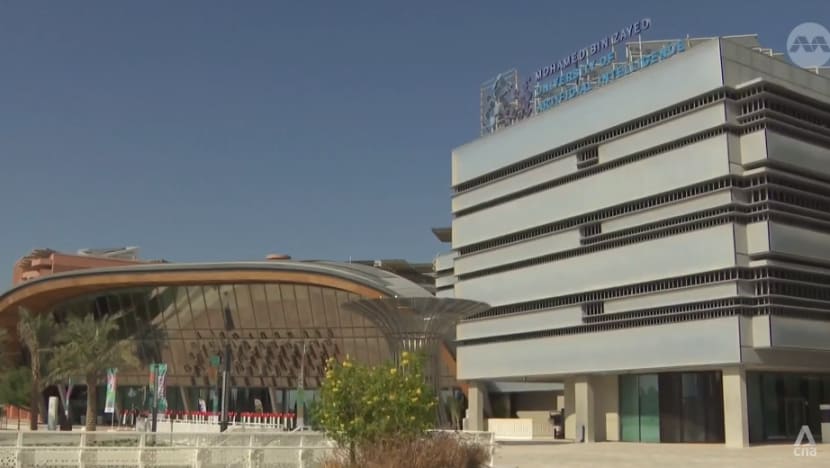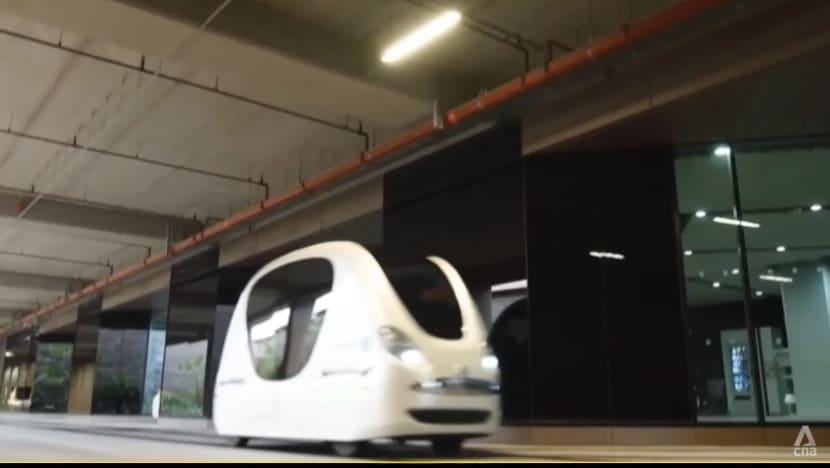Solar panels, cool winds and eco-friendly buildings: Abu Dhabi’s Masdar City aims to be a green beacon for the world
Despite eye-watering building costs and innovative strides, green projects like Masdar City are facing scrutiny and challenges.

Conceptualised by renewable energy company Masdar and funded by the Abu Dhabi government, Masdar City has been billed as a carbon-neutral urban centre fuelled by green power.

This audio is generated by an AI tool.
MASDAR CITY, UAE: At first glance, Masdar City shimmers like a mirage, a modern metropolis rising from the desert sands.
It is built on a lofty premise – to be the world’s most sustainable eco-city.
Conceptualised by renewable energy company Masdar and funded by the Abu Dhabi government, the city has been billed as a carbon-neutral urban centre fuelled by green power.
Located on the outskirts of Abu Dhabi and near the capital city’s international airport, it is an ambitious endeavour that spans about 640 hectares and has the capacity to sustain a population of 40,000 and 1,500 companies.
Its existence may have been born from necessity. The United Arab Emirates emitted about 20 tons of carbon annually per capita in 2020, according to data sourced from Climate Watch Historical GHG (Greenhouse Gas) Emissions – one of the highest in the world.
SOLAR PANELS AND DESIGNING WINS
While some energy needed for running the city is drawn from the national grid, a large portion is generated by a solar plant adjacent to the city and solar panels located on rooftops.
The effort offsets more than 15,000 tonnes of carbon emissions per year, equivalent to taking more than 3,000 cars off the road.
Masdar City’s design, which takes inspiration from traditional Arab architecture, includes low-rise buildings, narrow streets made for walking, and strategically placed shaded areas to save energy and invite more natural light.
The city is oriented in a northeast-southwest direction so it minimises solar gain and enables the use of cool winds generated during the night, keeping the area 10 degrees Celsius cooler than parts of Abu Dhabi.
"The interesting thing about this air movement to keep the place cool is that it does not add costs to the design of the city. It is simply the location and adjustment and planning of elements that has to be there in the first place,” said associate director of sustainability and corporate social responsibility at Masdar City, Mr Chris Wan.
Masdar City's eco-friendly buildings -- constructed with low-carbon cement, recycled aluminium, and other sustainable materials -- are designed to reduce energy and water consumption by at least 40 per cent compared to traditional urban areas.
Residents and visitors can walk or hop on the autonomous, electric-powered public transportation system which operates using magnets. More than 2 million people have travelled on the vehicles in about 10 years, said Masdar City communications manager Amy Robertson.

MEGA SUSTAINABLE CITY PROJECTS
Masdar City is primarily focusing on offices and research and development, including acting as an incubator for the development of clean technologies and low-carbon buildings in the region.
Pointing out that Masdar City has a university dedicated to artificial intelligence and a technology innovation institute, the city’s director of growth Steve Severance said: “We want to be the place where the technologies that are going to help us to get to net zero, are developed."
Masdar City is one of a number of such mega sustainable city projects sprouting up in the Middle East, including NEOM in Saudi Arabia, Lusail City in Qatar and the Red Sea Project in Egypt.
The Abu Dhabi government alone has chipped in US$15 billion for Masdar City. Qatar spent about US$45 billion on the construction of Lusail, and Saudi authorities launched NEOM in 2017 at a staggering cost of half a trillion dollars.
CHALLENGES AND SCRUTINY
Despite eye-watering building costs and innovative strides, these green projects are facing scrutiny and challenges.
Masdar City was initially set to be completed in 2016. The deadline is now pushed to 2030 due to challenges in attracting revenue and residents.
While lauding the ambition and technology, there is a need to “take a step back” and see if it makes sense to create a city and then see if people would like to live there, instead of consulting possible residents first, said Dr Simone Sandholz, head of the Urban Futures & Sustainability Transformation Programme at the United Nations University’s Institute for Environment and Human Security.
Masdar City officials remain committed to their plan. Addressing criticism that the city is not advancing as fast as it was expected to, Mr Severance said: “Our value is not really because we're going fast, our value is in executing the vision that we had … it really shows a path for this region and globally, on how development can be done."

















